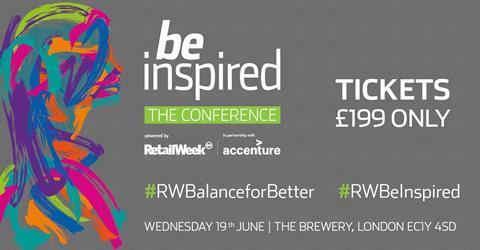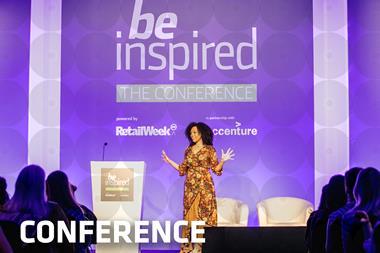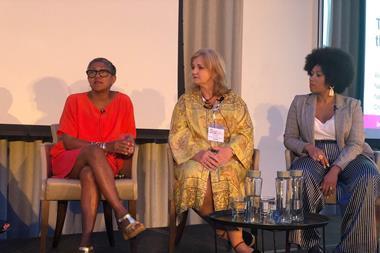To create a diverse and inclusive workplace, chief executives need to lead the charge. But how can they drive change?
Across every business sector companies are striving to become more diverse and inclusive, and it’s clear to see why.
According to Accenture, team performance improves by 50% when everyone feels included.
This impacts the bottom line. In its 2017 report Why Diversity Matters, McKinsey discovered that companies in the top quartile for gender diversity on their executive teams were more likely to have above-average profitability than companies in the fourth quartile.
For ethnic and cultural diversity, top-quartile companies were 33% more likely to outperform on profitability.
The message is clear for business leaders: if you want your company to grow, you need to put diversity and inclusion on the agenda and galvanise your business to embrace this.
“For ethnic and cultural diversity, top-quartile companies were 33% more likely to outperform on profitability”
Diversity and inclusion may often be led by the HR and people teams, but experts argue that it is the chief executive that really spearheads an inclusive culture within the business they lead.
Cynthia Davis, chief executive and founder of BAME Recruitment, a supporter of Be Inspired’s upcoming conference, says: “If those that make strategic decisions don’t understand the impact that a diverse workforce has, it’s so much harder for it to trickle down. The direction has to come from the top.”
But how should chief executives lead the charge?
Share a vision and set targets
Experts agree that chief executives need to have a vision of what a diverse and inclusive workforce is, and they must share this with the business.
Davis says: “People need to be brought on a journey with you. Unless you tell people what you’re trying to do, they’ll get lost on that journey.”
Accenture positions bold leadership as one of the three main drivers of cultural change in a business. It says bold leaders set diversity goals and are accountable for realising those goals.
“If those that make strategic decisions don’t understand the impact that a diverse workforce has, it’s so much harder for it to trickle down. The direction has to come from the top”
Cynthia Davis, BAME Recruitment
In 2016, mining giant BHP Billiton set a target to have women make up 50% of its workforce by 2020.
This is a tall order in the male-dominated mining industry where work is often remote, physical and inflexible, but late last year the company revealed it was on track to meet this target.
BHP Billiton chief executive Andrew Mackenzie says that its aspirational target raised eyebrows, but insists that “real change needs passion”.
“We need to feel uncomfortable about the targets we set ourselves to know we’ve pushed hard enough.”
Mackenzie says setting the target galvanised the business: “We have made more progress towards gender diversity in the last year than we have in the past 10.”
Accenture’s Getting to Equal research shows that women on the fast track, which it describes as reaching manager level within five years and leading their peer group in terms of advancement in the workplace, are more likely to work at organisations that have set diversity targets.
“We need to feel uncomfortable about the targets we set ourselves to know we’ve pushed hard enough”
Andrew Mackenzie, BHP Billiton
Chief executives also need to make sure leadership teams are held accountable for meeting these targets.
Accenture found that in leadership teams that are held accountable for improving gender diversity, 63% are more likely to have seen a greater share of women in senior leadership roles increase in five years.
Davis says it is important that chief executives address diversity issues within their businesses and set out action plans.
“If you’re leading an organisation that is not diverse, you’ve got to stand up and admit to it, and say these are the measures we’re going to take,” she says.
Setting targets alone is not enough.
To let the business know this is a real priority, chief executives need to prioritise time, energy and resources to address these issues, says Allyson Zimmermann, executive director of Europe at Catalyst, a global non-profit that works with chief executives to build workplaces that work for women.
“When leaders can talk authentically without a PowerPoint about diversity and inclusion, they bring people on board,” she says.
Discuss differences and tackle unconscious bias
Many think that equality means treating everybody the same. However, true inclusion only comes from acknowledging differences, says Zimmermann.
Catalyst believes that employees feel included when they feel simultaneously similar and distinct from their co-workers. This makes them feel a sense of both belonging and uniqueness.
“If a leader only focuses on commonalities, it can feel like our differences don’t matter. Leaders shouldn’t be afraid to talk about differences”
Allyson Zimmermann, Catalyst
However, Zimmermann points out that leaders rarely talk about what makes us unique.
She says: “Leaders often mean well and say ‘I don’t see black or white, etc’ but we do see difference. If a leader only focuses on commonalities, it can feel like our differences don’t matter. Leaders shouldn’t be afraid to talk about differences.”
“For example, if someone has an accent, ask them where they’re from and find out more about them.”
Catalyst’s four leadership behaviours to promote inclusion
Empowerment: Enabling direct reports to develop and excel.
Humility: Admitting mistakes; learning from criticism and different points of view; acknowledging and seeking the contributions of others to overcome one’s limitations.
Courage: Putting personal interests aside to achieve what needs to be done; acting on convictions and principles even when it requires personal risk-taking.
Accountability: Demonstrating confidence in direct reports by holding them responsible for performance they can control.
Inclusive leaders are also mindful of personal and organisational bias.
We all have unconscious biases that are hardwired into our brains.
We make quick judgements about people and situations without realising, which can be influenced by our background, cultural environment and personal experiences.
A Yale University study found that male and female scientists, both trained to be objective, were more likely to hire men and consider them more competent than women – and even pay them $4,000 more per year.
Unconscious bias can prevent businesses from achieving their diversity aims and also impacts performance.
The Center for Talent Innovation found that, of employees who had experienced bias, 34% reported withholding ideas or solutions in the last six months and 48% said they looked for a new job.
The inclusive leader should acknowledge that both they and their business will have these biases and put policies in place to mitigate them.
This could include viewing job applications and CVs without names attached and avoiding homogeneous interview panels.
Make mentoring available for all
Ask business leaders what has helped them rise to the top and one of the most popular responses is the help of a mentor.
A sizeable 75% of US executives said mentoring had been critical to their career development, according to a survey by the American Society for Training & Development.
At Retail Week’s Be Inspired conference last year, Karen Millen chief executive Beth Butterwick encouraged people to seek out a mentor: “Don’t do it the hard way – surround yourself with good people and get advice.”
The inclusive chief executive should make mentoring available for all employees in their business and give their time to the cause.
“Don’t do it the hard way – surround yourself with good people and get advice”
Beth Butterwick, Karen Millen
Winser London founder Kim Winser OBE, who was the youngest and first female director of Marks & Spencer and has led businesses including Pringle of Scotland and Aquascutum, advises leaders to prioritise mentoring.
“I hold mentor days once a month where anyone can book in an hour with me,” she says.
“People want guidance and support. We should use every opportunity to be as encouraging as we possibly can and keep asking questions.”
And it is not just traditional mentor relationships that can help. Reverse mentoring can also help improve inclusivity and give more senior executives a fresh outlook.
Some companies have done reverse mentoring around age, with millennials helping older colleagues to understand issues around new tech and ways of thinking, while others have focused on bringing together people of different ethnicities or sexual orientations.
This can help us to understand people’s differences, break down barriers and tackle unconscious bias.
Retail’s customer base is becoming increasingly diverse. To serve them and understand their needs, we need an increasingly diverse workforce.
The sector’s leaders must take action and create workplaces that are inclusive to all.
Be Inspired: the conference
Leadership is a core theme of the Be Inspired conference for 2019.
Join Retail Week, along with partners Accenture and BAME Recruitment, on June 19 for an exclusive session on female leadership and empowerment with TJX Europe president Louise Greenlees.
Learn more about the conference and secure your place here.









No comments yet